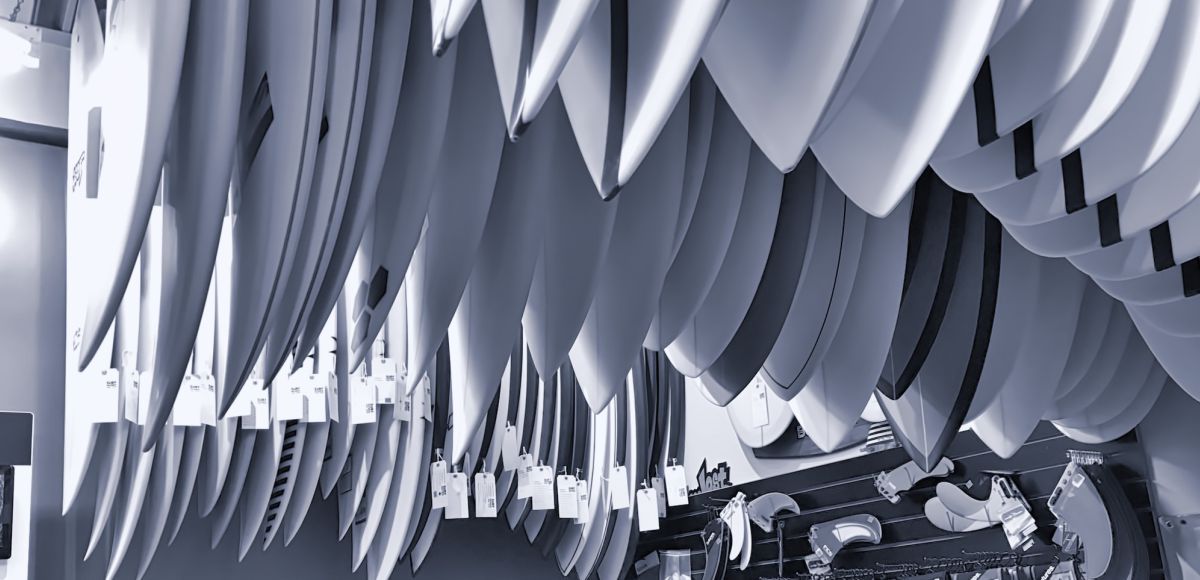
A Multi-Construction Quiver
By Timmy Matthews
I grew up with polyurethane surfboards. My mom’s Town and Country shaped by Glenn Pang (circa 1981) that I learned to surf on, my Local Motion potatochip bought with Christmas money from a friend for $100 when I was 12, the first brand-new T&C I ever bought in high school after spending my summer digging ditches - they were all polyurethane. When I worked at the Hawaiian Island Creations factory, poly boards were nearly 99% of our production and the preferred construction of most local surfers in Hawaii (most of the EPS boards we made went to Japan). I just never really had any exposure to epoxy boards.
Until Toronto.
Epoxy in Toronto seems as natural as rooting for the Leafs or ordering a double-double. It’s a sensical pairing considering the extra weight a thick wetsuit adds, the varying strength of the waves and the additional durability afforded- considering the icy conditions, prevalence of debris in the lineup and the frequency of travel. Having brought a custom-made poly, retro shape from Hawaii that featured a beak nose for added forward volume and a generous three inches of thickness, I was intrigued by the prospect of testing the limits epoxy had to offer in terms of downsizing.
The shortest board I own back home is a Kahanamoku Sons 'Squad Car' at 5’6” X 20” X 2.5”. Being 6’2” and 180 lbs, it’s a pretty small board for my size (my typical shortboard is 19 inches wide and 2.5 inches thick ranging from 6’0” to 6’4” in length). The Squad Car has a wide nose and tail with a flat rocker, features typical of grovelers suited for most days on the lake.

When I had it made, I was looking for something skatie and loose for small to medium-sized waves (chest to head high). I never had any issues paddling it and always found the board nimble underfoot, with an abundant appreciation for its responsiveness.
So with the advent of my exposure to epoxy, I decided to drop a couple of inches and get really loose with the tail. I figured the additional buoyancy from the Linear Flex Technology (LFT) coupled with the extra wide shape of Firewire’s “Sweet Potato” should offset the drop in length. At 5’4” X 20” X 2.5” it was easily the smallest board I had ever ridden. I got a set of really drivy K2 FCS fins with an easy release in a 5-fin set to get really buck wild.

I have been pleasantly surprised with results. Most impressive has been the paddle-ability of such a short board, even with the weight and constriction of a full winter wetsuit. With a nice, corky feel- given the short, yet wide stature of the board- it is extremely lively and moves quickly with little prompt in good speed. At a quality test session on Lake Erie over the summer, I found myself babying my bottom turns on a couple of juicy, slightly overhead waves, but otherwise have had no issues with it being too loose or sliding out on me.
During that Erie summer session, I would have preferred a lake version of a step-up, something in the 6’4” to 6’6” range with a round-pin tail. The lake version would feature a little less nose rocker and a little more forward volume for added paddle power. A step-up (a shortboard with a little more length to handle greater speeds reached on bigger waves) lends itself to the benefits of polyurethane more so than epoxy since the tail will dig in on a critical turn better, and a sander can achieve a sharper tail edge for greater hold. There’s also a benefit to having a little more weight and flex to absorb any bumps or uneven texture on the wave.
Even with decades of surfing under my belt, I’ve learned something new from my experience here and switched up my quiver in order to expand the horizons of my personal surfing philosophy. I remember being told in the early 2000s that fishes will screw up your style and make your shortboarding lazy and sloppy. Then, potato chips gave way to grovelers and the small-wave game was changed forever. Being more open and less stringent about what can be ridden, where it can be ridden and how, I’m excited to see how my next experience will further my ever-developing understanding of the sport.
Aloha, Timmy Matthews
